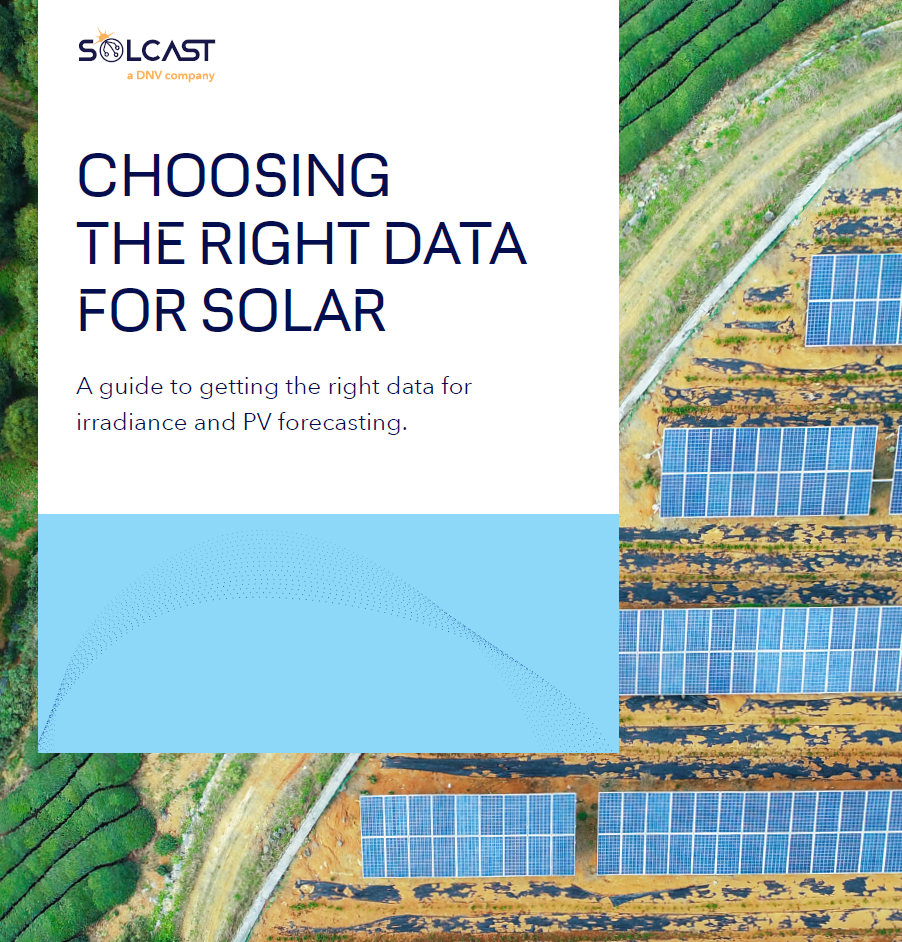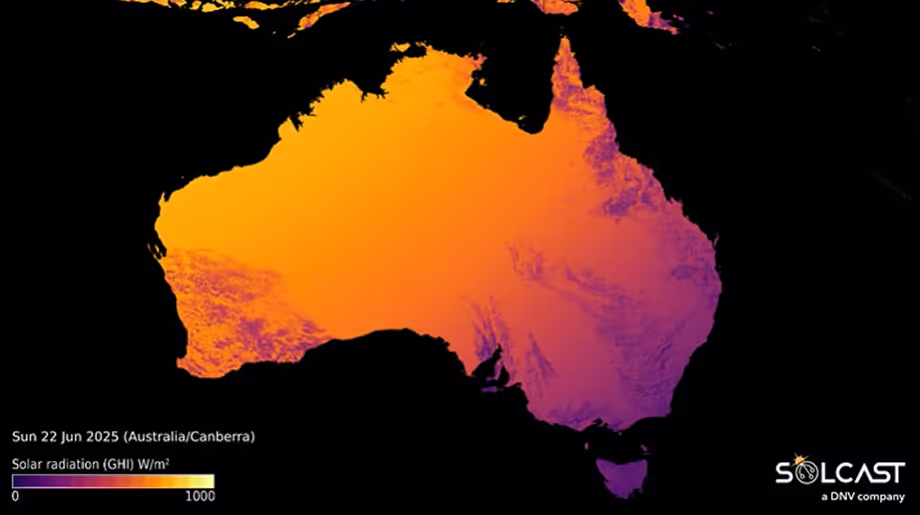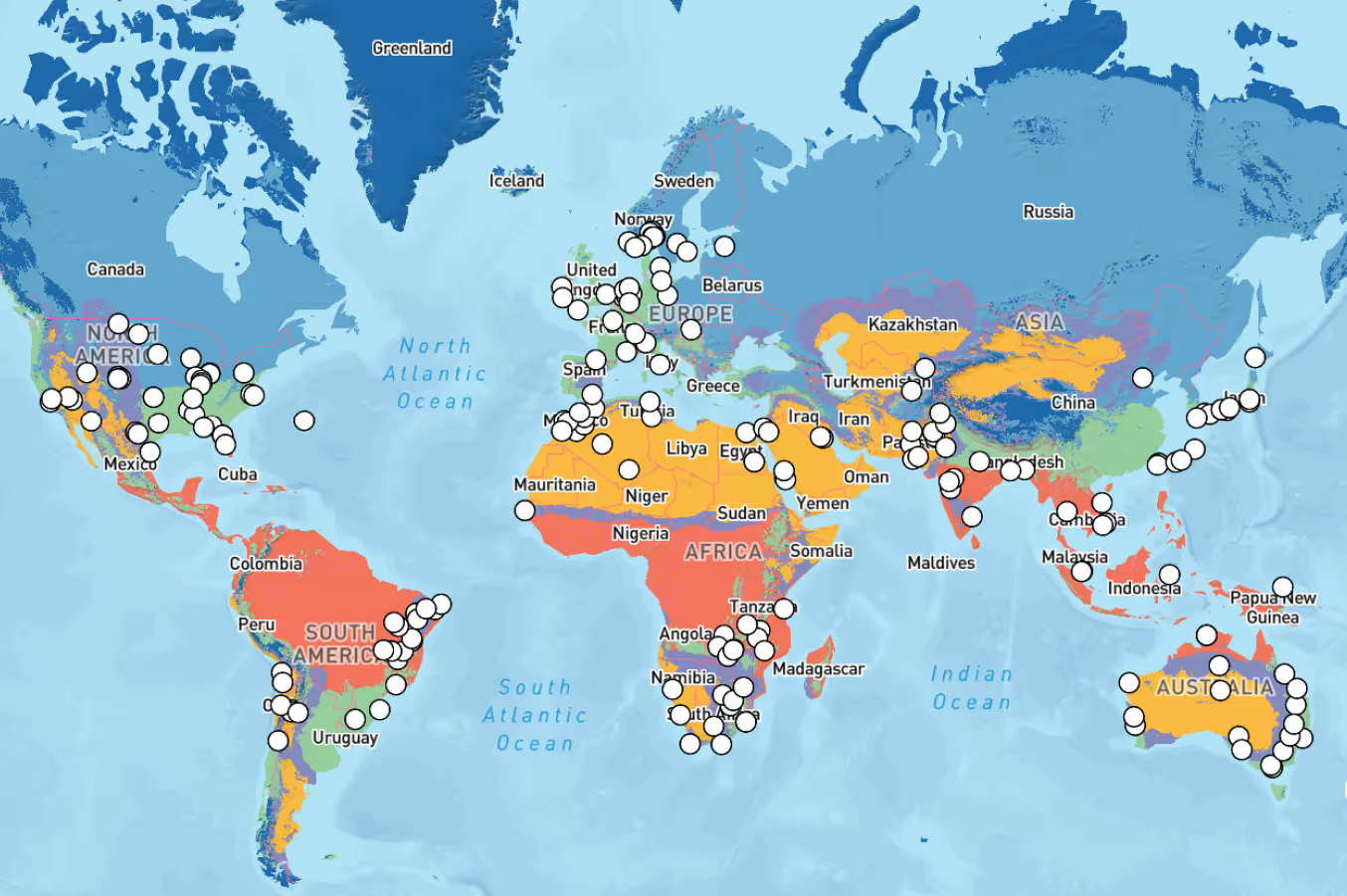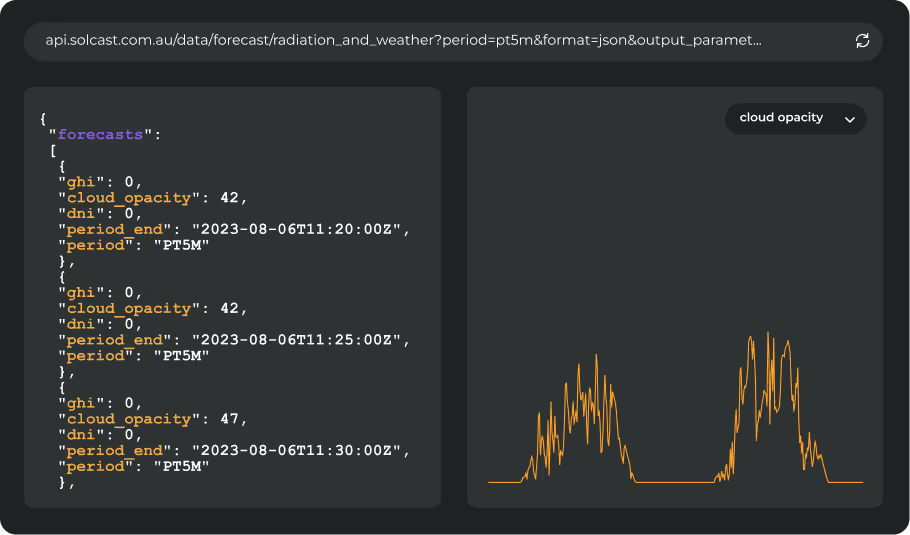What data should you use for solar projects and operations?
High-performance solar forecasting, resource assessment, and operational planning all start with one thing: accurate irradiance data. But not all data sources capture the factors that truly drive variability — clouds, aerosols, and snow soiling.
Our downloadable guide explores how Solcast, a DNV company, models these factors with the precision needed for commercial and utility-scale decision-making. Inside, you’ll discover why 5-minute cloud tracking, aerosol modelling at 90-metre resolution, and validated snow soiling models can make or break your forecast accuracy and financial results.
Whether you’re choosing a data API, building your own models, or planning for regulatory compliance, this guide will help you ask the right questions — and select solar data that’s fit for purpose.
What's inside the guide?

- Real 5-minute cloud tracking: How satellite imagery, albedo data, and machine learning deliver accurate, real-time forecasts for better asset management, market modelling, and financial planning.
- Aerosol modelling at 90-metre resolution: Why aerosols are a top driver of solar variability and how Solcast’s enhanced modelling delivers more accurate forecasts than standard weather data.
- Snow soiling impact and modelling: How validated models forecast power losses from snow and help improve operational decisions in snowy regions.
Start evaluating our data via the Solcast API, or reach out to our team to learn more.










.avif)


